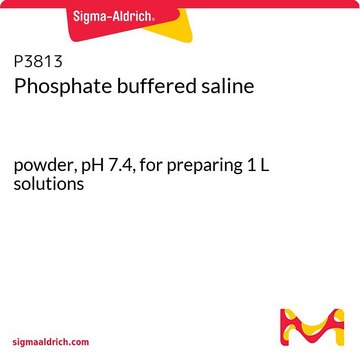S7757
Natriumthiocyanat
reagent grade, 98-102% (titration)
Synonym(e):
Natriumisothiocyanat, Natriumrhodanid, Natriumsulfocyanid
About This Item
Empfohlene Produkte
Qualität
reagent grade
Assay
98-102% (titration)
Form
powder
pH-Wert
4.8 (20.1 °C, 1070 g/L)
mp (Schmelzpunkt)
287 °C (dec.) (lit.)
SMILES String
[Na]SC#N
InChI
1S/CHNS.Na/c2-1-3;/h3H;/q;+1/p-1
InChIKey
VGTPCRGMBIAPIM-UHFFFAOYSA-M
Suchen Sie nach ähnlichen Produkten? Aufrufen Leitfaden zum Produktvergleich
Anwendung
- Effect of Sodium Thiocyanate and Sodium Perchlorate on Poly(N-isopropylacrylamide) Collapse: This research investigates the effects of sodium thiocyanate on the collapse of poly(N-isopropylacrylamide). The study provides insights into the molecular interactions and thermodynamic behavior of this polymer in the presence of thiocyanate ions (Pica & Graziano, 2020).
Signalwort
Danger
H-Sätze
Gefahreneinstufungen
Acute Tox. 4 Dermal - Acute Tox. 4 Inhalation - Acute Tox. 4 Oral - Aquatic Chronic 3 - Eye Dam. 1
Zusätzliche Gefahrenhinweise
Lagerklassenschlüssel
13 - Non Combustible Solids
WGK
WGK 1
Flammpunkt (°F)
Not applicable
Flammpunkt (°C)
Not applicable
Analysenzertifikate (COA)
Suchen Sie nach Analysenzertifikate (COA), indem Sie die Lot-/Chargennummer des Produkts eingeben. Lot- und Chargennummern sind auf dem Produktetikett hinter den Wörtern ‘Lot’ oder ‘Batch’ (Lot oder Charge) zu finden.
Besitzen Sie dieses Produkt bereits?
In der Dokumentenbibliothek finden Sie die Dokumentation zu den Produkten, die Sie kürzlich erworben haben.
Kunden haben sich ebenfalls angesehen
Unser Team von Wissenschaftlern verfügt über Erfahrung in allen Forschungsbereichen einschließlich Life Science, Materialwissenschaften, chemischer Synthese, Chromatographie, Analytik und vielen mehr..
Setzen Sie sich mit dem technischen Dienst in Verbindung.









